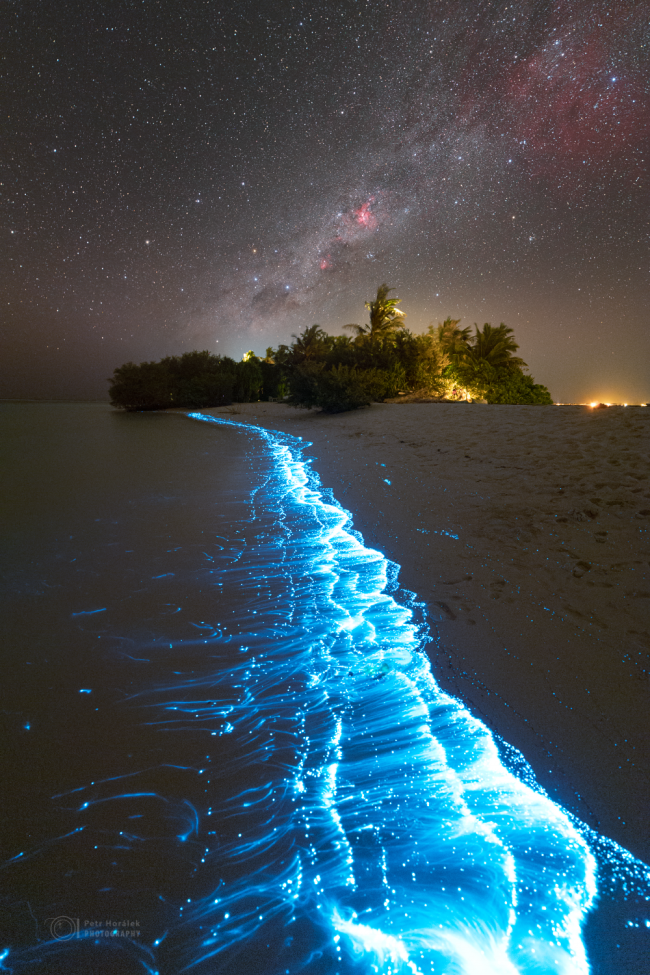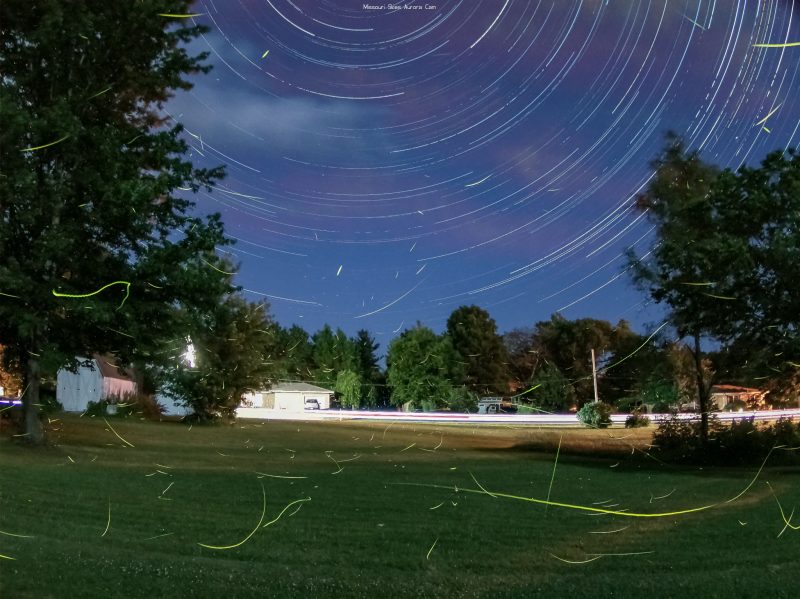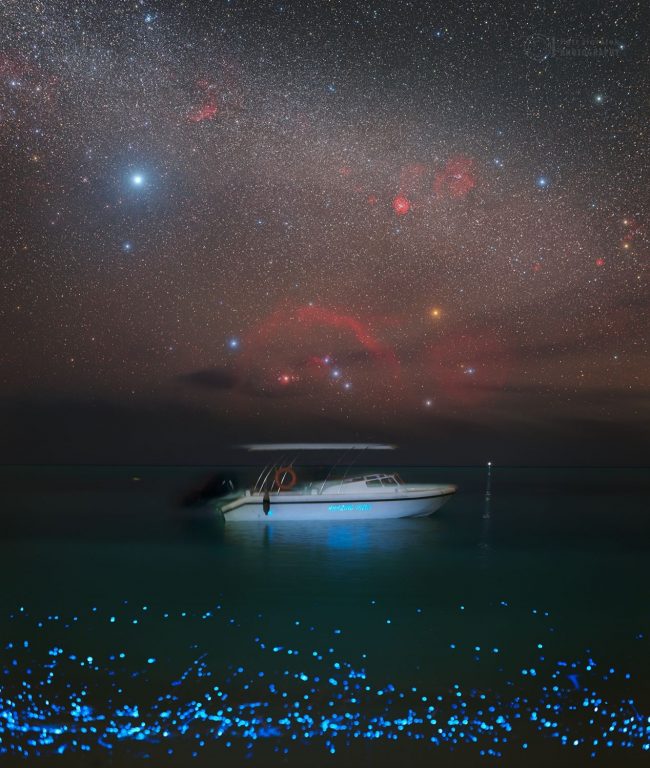
What is bioluminescence?
When you hear the word bioluminescence, do you think of glowing ocean waves under a dark sky? Many do. But, bioluminescence includes all life that – through a chemical reaction – emits light. In the image above, a single-celled form of marine plankton, known as bioluminescent dinoflagellates, are the source of the light on the incoming waves. But in addition, there are bioluminescent creatures in the deeper ocean, too. And we here on Earth’s dry land sometimes see bioluminescent creatures flying in the air.
First, about the image above, which is from the Maldives, an island nation in the Indian Ocean, southwest of Sri Lanka and India. According to the Visit Maldives website:
These dinoflagellates use a chemical called luciferin to emit a bright blue light as a defense mechanism … The flashes of light produced by the dinoflagellates can disorient and confuse predators.
The movement of the waves can also trigger this light emission, resulting in the mesmerizing sight of glowing waves washing ashore in the Maldives.
Last chance to get a moon phase calendar! Only a few left. On sale now.
How do living creatures make light?
Luciferin is the key to these creatures that emit living light. Luciferin is a molecule that reacts in the presence of the enzyme luciferase to produce light. Indeed, the words come from lucifer, which is simply Latin for light-bearer.
The chemical reaction between the two splits off a molecular fragment. That, in turn, produces an excited state that emits light.
In the video below, you can see how scientists are studying undersea creatures to learn more about bioluminescence.
Other sources of bioluminescence
Bioluminescence is common in marine life, such as jellyfish, sharks, crustaceans and fish. However, it can occur on land too, in worms, fireflies and even plant life such as mushrooms. In fact, here’s a list of 10 mushrooms that glow in the dark.

Where to see bioluminescent life
As shown above, you might be surprised to learn that bioluminescent life is all around us on planet Earth. Indeed, from glowworms inside caves in New Zealand to fluorescent fungi in Japan to fireflies in your backyard, you don’t have to travel too far to see examples of it.
If you’re interested in bioluminescent beaches, try Mosquito Bay in Puerto Rico or the Luminous Lagoon in Jamaica.
Meanwhile, parts of Tennessee, North Carolina and South Carolina offer not just fireflies, but synchronous fireflies, where groups of the glowing creatures all turn their lights on and off in tandem, while searching for mates.
Learn more with this list of more than 20 places to see bioluminescence around the world.

Bottom line: Bioluminescence is living light. From plankton to jellyfish to fireflies, many creatures around the world can glow in the dark.
The post What is bioluminescence? It’s a living light first appeared on EarthSky.
